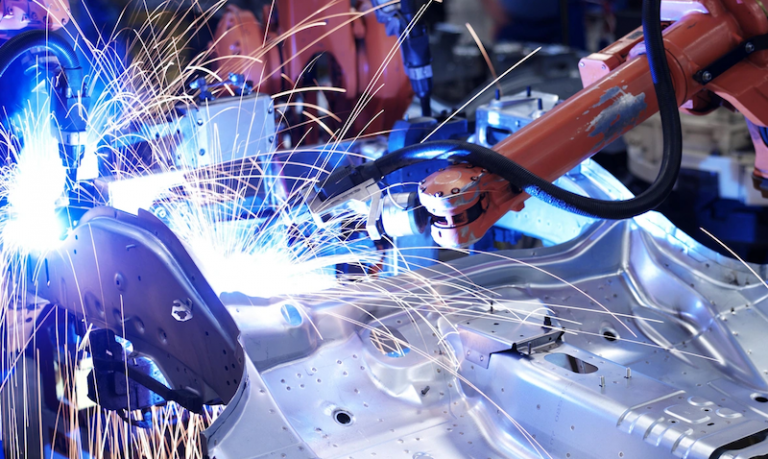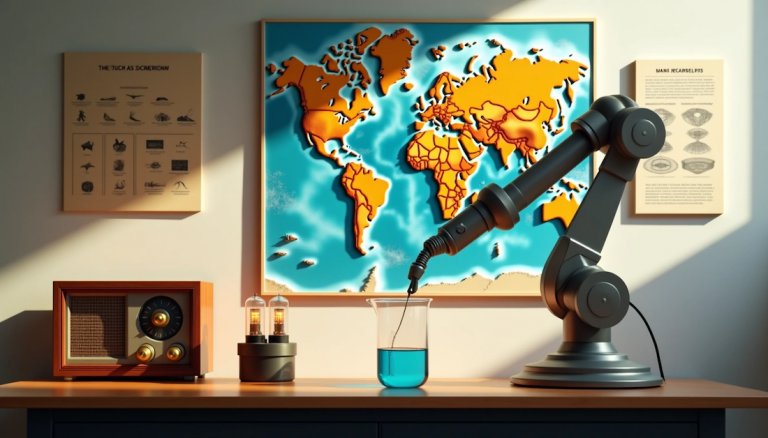In today’s world, robots assemble cars, package goods, weld metals, inspect quality, and even deliver items in warehouses. Automation is everywhere. But few people know that this technological revolution began with a single, groundbreaking invention more than six decades ago—Unimate, the world’s first industrial robot.
Unimate didn’t just change manufacturing; it redesigned the future of work, productivity, and technology, paving the way for modern robotics, artificial intelligence, and advanced automation systems. Its story is a fascinating journey of innovation, skepticism, and ultimate triumph.
The Early Days of Industrial Automation
Before the 1950s, industrial work was almost entirely human-powered. Factories were noisy, dangerous, fast-paced environments where workers performed repetitive and physically demanding tasks. This period saw an alarming rate of workplace injuries, especially in industries like automotive manufacturing, metal forging, and chemical processing.
The world needed a solution—something that could take on risky, monotonous jobs while improving speed and precision.
This need set the stage for visionary engineer George Devol, who filed a patent for the world’s first programmable robotic arm in 1954. His invention would later be named Unimate [1].
George Devol and the Birth of Unimate
George Devol wasn’t just thinking about building a machine; he was imagining the future. He developed a device that could be programmed to perform a sequence of tasks, capable of storing commands in memory—an unheard-of concept in the 1950s.
In 1956, Devol partnered with entrepreneur and engineer Joseph Engelberger, now widely known as the “Father of Robotics.” Together, they founded Unimation, the world’s first robotics company.
Their mission was simple but revolutionary:
Create intelligent machines that could work like humans, but with greater safety, accuracy, and endurance.
The First Unimate Robot Enters the Factory
In 1961, history was made.
The first Unimate robot was installed on a General Motors (GM) assembly line in New Jersey.
Its job?
To pick up 30-pound die castings, move them, and weld them—tasks that were extremely dangerous for human workers due to exposure to heat, fumes, and repetitive heavy lifting.
Unimate performed flawlessly. It didn’t get tired, didn’t take breaks, and didn’t make mistakes.
GM soon realized what they had unleashed—a tool that could radically increase productivity while reducing workplace hazards.
This success sparked interest across global industries, making Unimate the first robot to be commercially adopted in factory automation.
How Unimate Worked: A Breakthrough in Technology
For its time, Unimate was a technological miracle. Its key innovations included:
1. Programmable Memory
Unimate used a magnetic drum memory system, which allowed it to recall thousands of positions and movements.
This meant the robot could be “taught” tasks and repeat them consistently.
2. Hydraulic Arms
Its hydraulically powered arm could lift heavy materials with stability and precision—far more than early electric motors could handle.
3. Control Systems
Analog control technology helped Unimate respond quickly to commands, adjust timing, and move smoothly.
4. Safety by Design
Unimate reduced workers’ exposure to heat, heavy lifting, sparks, and toxic fumes, making factories safer than ever before.
These breakthroughs laid the technological foundation for today’s robotic arms, found in virtually every modern manufacturing plant.
Transforming Global Manufacturing Forever
The introduction of Unimate triggered a transformation that rippled across the world.
1. Increased Speed and Efficiency
Unimate completed tasks faster and more consistently than human workers, dramatically improving production output.
2. Higher Product Quality
Robots removed the possibility of human error in repetitive tasks, ensuring uniform quality in mass production [2].
3. Reduction in Human Injury
Dangerous tasks like welding, die casting, and heavy lifting were transferred to robots, protecting workers from injury and long-term health issues.
4. Birth of the Modern Assembly Line
Unimate enabled continuous-flow production systems, contributing to the creation of the fully automated assembly line, a staple of modern manufacturing.
5. Global Adoption of Robotics
By the late 1970s and 1980s, countries like Japan rapidly adopted industrial robots, eventually leading to the world-class robotic manufacturing systems we see today.
Unimate’s Influence Spreads Beyond Factories
The success of Unimate didn’t end in manufacturing. Its legacy inspired automation in:
Automotive Engineering
The automotive industry became the world’s largest user of industrial robots, with Unimate as the prototype.
Heavy Machinery and Metal Industries
Robots began handling hazardous casting, molding, and forging operations.
Packaging and Assembly
Automated systems took over sorting, packing, labeling, and product assembly.
Robotics Research
Unimate’s legacy helped spark major academic research in AI, machine learning, humanoid robots, and automation technologies.
Challenges and Skepticism in the Early Days
Interestingly, Unimate wasn’t welcomed warmly at first. Many factory workers feared job loss, while executives doubted the machine’s reliability.
But as they witnessed its consistency, safety benefits, and massive boost in productivity, acceptance grew rapidly.
Unimate proved that robots were not replacements for humans—but tools that allowed humans to move into safer, higher-skilled, and more creative roles.
The Legacy of Unimate
Today, Unimate is celebrated as one of the most influential inventions of the 20th century.
Its contributions include:
- Laying the foundation for the global robotics industry
- Inspiring decades of automation research
- Revolutionizing industrial safety
- Transforming global production methods
- Helping companies scale productivity beyond human limits
Modern robots—whether on automobile lines, in Amazon warehouses, or in semiconductor labs—owe their existence to Unimate.
Unimate’s technological DNA lives inside every robotic arm in the world today.
The Robot That Started a Global Revolution
Unimate wasn’t just a machine—it was a turning point in human history.
It demonstrated that robots could work alongside humans, handle dangerous tasks, and reshape industries as mentioned by KAPDEC.
What began as a simple robotic arm in a GM factory has evolved into a global movement of intelligent machines, automation systems, and advanced robotics. The manufacturing world, once dependent on manual labor, is now driven by precision, safety, and innovation.
Unimate changed the world—and its impact continues to grow every single day.
FAQ
What exactly was Unimate, and why is it considered revolutionary?
Unimate was the world’s first industrial robot, created in the late 1950s by George Devol and Joseph Engelberger. It performed repetitive and dangerous tasks—such as moving hot die-cast metal parts—far more efficiently than humans. It is considered revolutionary because it introduced automation into manufacturing, setting the foundation for the robotics industry that now powers automotive, electronics, aerospace, and logistics sectors.
How did Unimate impact factory workers at the time?
Initially, many workers feared that Unimate would replace jobs, but in reality, it shifted workers away from hazardous, high-risk tasks and toward skilled technical roles such as robot maintenance, programming, and supervision. It improved workplace safety and set the tone for human–robot collaboration.
Which industries benefitted the most from Unimate?
The automotive industry was the first major adopter, with General Motors using Unimate for tasks like welding and material handling. Over time, the robot’s impact spread to metalworking, electronics, packaging, and heavy machinery. Its success demonstrated that robots could consistently perform tasks requiring strength, precision, and repetition.
How did Unimate influence modern robotics?
Unimate introduced the very concepts that define modern robotics today—programmable automation, hydraulic actuation, and precision-controlled movements. It became the blueprint for industrial robots used in assembly lines globally. Without Unimate, today’s advanced robots (such as robotic arms, autonomous machines, and AI-driven manufacturing systems) might not exist in their current form.
Why do experts say Unimate started the “robotics revolution”?
Before Unimate, factories depended entirely on human labor. Unimate’s arrival proved that automated systems could transform productivity, accuracy, and safety at scale. It triggered massive technological investments, academic research, and engineering innovation in robotics. By the 1980s, almost every major factory used robots—an industry still expanding today.
What is Unimate’s legacy in today’s manufacturing world?
Unimate’s legacy is seen in every robotic arm operating in factories worldwide. Today’s robots are faster, smarter, safer, and AI-driven, but they still follow the fundamental principles introduced by Unimate. Its biggest legacy is that it reshaped global manufacturing, turning automation into a standard practice and enabling mass production, lower costs, and higher quality products.
Final Thought
Unimate was more than a mechanical arm—it was the spark that ignited an entirely new era of manufacturing. At a time when factories depended solely on human strength and endurance, Unimate proved that machines could take on dangerous, repetitive, and precision-heavy work with unmatched consistency. What began as a bold experiment in a single automotive plant eventually reshaped the global economy, influenced countless engineering breakthroughs, and laid the foundation for the advanced robotics and automation systems we rely on today.



